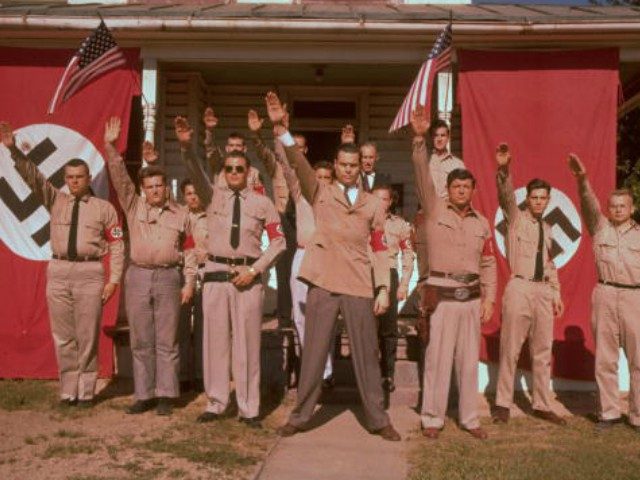The JFK documents released through the National Archives include an FBI memorandum that shows the bureau investigating a man for John F. Kennedy’s assassination who actually assassinated another prominent American political leader four years later.
A November 27, 1963, memo issued by FBI special agent E. Parker Brown reports, “The following bombing suspects were checked out on 11-23-63 by indicated agents and it was determined that they could not have been in the Dallas area at the pertinent time.”
The bombing suspects investigated for the Kennedy assassination include George Lincoln Rockwell, the flamboyant pipe-smoking founder of the American Nazi Party, and John Patler, a Rockwell protégé who murdered his mentor.
On August 25, 1967, Patler, a former Marine marksman, ascended atop a building in Arlington, Virginia, and shot Rockwell twice while the American Nazi sat in his automobile. The similarities between the Kennedy assassination and the Rockwell assassination end there. Rather than a vigilante taking revenge on Patler, the public, with such a low regard for the loathsome man he killed, did not regard the crime as much of a crime. Patler left prison after serving a short sentence.
Immediately following the assassination, the FBI located a who’s-who of American extremists to investigate their potential involvement in murdering the president. In addition to the likes of Rockwell, the FBI interviewed Communists and tracked Klansmen. Given the fringe beliefs of the actual assassin, the FBI grasped from the get that the killer might, like previous killers of American presidents, harbor an out-there outlook.
For instance, the FBI also investigated Roy James, who received the Order of Adolf Hitler Silver Medal from Rockwell for sucker punching Martin Luther King, and American Nazi Party moll Eva June Hoff, in the aftermath of the assassination. The bureau determined the former’s presence in the American Nazi Party’s Arlington, Virginia, barracks, and the latter’s in the party’s headquarters, at the time of Kennedy’s murder.
On the day of the assassination, the FBI tracked the whereabouts of various Ku Klux Klan leaders. Among those investigated in the aftermath of President Kennedy’s murder was Asa Earl Carter, infamous for authoring George Wallace’s “Segregation now! Segregation tomorrow! segregation forever!” line and subsequently pseudonymous as the author of the book that became the Clint Eastwood movie The Outlaw Josie Wales. In one incarnation, Carter primaried Bull Connor for insufficient devotion to segregationist principles; in another, he styled himself as an American Indian and authored the Oprah-recommended The Education of Little Tree. On November 22, 1963, the FBI imagined it possible that Carter, or someone like him, murdered the president.
Special agent Woodon E. Draut informed FBI higherups, “An unidentified secretary at National Services Inc. Montgomery, Ala., a public relations, advertising and printing firm, advised that Asa Earl Carter left Montgomery to go to Birmingham to work there for the 2 days of 11/21-22/63 and would probably go from there to his residence near Anniston, Ala. This person advised that Carter normally stays at the Bankhead Hotel in Birmingham.”
The celerity with which the bureau located cranks, crackpots, and klansmen illustrates both the ’60s-era FBI’s intelligence-gathering capacity and a society that did little in the way of hamstringing it.
“It was a lot easier to have the usual suspects documented back then, no question,” James Kallstrom, former FBI assistant director, tells Breitbart News. He cites restraints on law enforcement regarding civil liberties, for better and worse, as one reason why the bureau might not have a bead on the scattered nutters the way they once did. “It’s a lot easier because of technology today,” Kallstrom reasons. “So, from that standpoint, it might be a wash.”

COMMENTS
Please let us know if you're having issues with commenting.